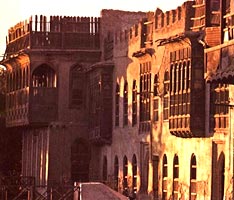Iraqi cultural heritage sites:
The cultural heritage site of Iraq is the entire spirit of the Iraqi people
in terms of its values, actions, works, institutions, monuments and sites.
Thus it is that the concept of cultural heritage sites comprises a whole
variety of realities from the architectural complex of “ Shanasheel”, or
“Baghdadi brick artwork”, or “Kerbalaie tiles” used in decorating tombs of
mosques and shrines, a living historic symbols to the remains of an
archaeological sites like “Ctesiphon (Al-mada’in).
 Sumerians, Babylonians, and other pre history archaeological sites are
unique witnesses to bygone civilizations. They are frequently associated
with ideas or beliefs that have marked the history of humanity since time
immemorial. Their value is not limited to Iraq or Iraqi people and is part
of the joint heritage of all the men, women and children of the planet.
Sumerians, Babylonians, and other pre history archaeological sites are
unique witnesses to bygone civilizations. They are frequently associated
with ideas or beliefs that have marked the history of humanity since time
immemorial. Their value is not limited to Iraq or Iraqi people and is part
of the joint heritage of all the men, women and children of the planet.
Man-made sites are monuments or groups of buildings or even whole historic
cities. Naturally, historic cities such as “Babylon”, “ Hattra”, “Samarra”,
may also contain archaeological sites. Such sites are a witness to the
civilizations that occupied them successively with their architecture and
way of life, beliefs and social organization.
The definition of a cultural site, which in former times was limited to
religious monuments and those relating to political authority, has been
extended: it now includes common or garden constructions such as dwellings,
workshops and tiny shops. Just as the period considered being worthy of
interest now includes the 19th and 20th centuries. Railway stations,
factories and ancient harbors are now regarded as cultural sites in so far
as they testify not only to architecture but also to economic and social
life and the history of technology.
All sites should now be protected without fail as a legacy to future
generations.

